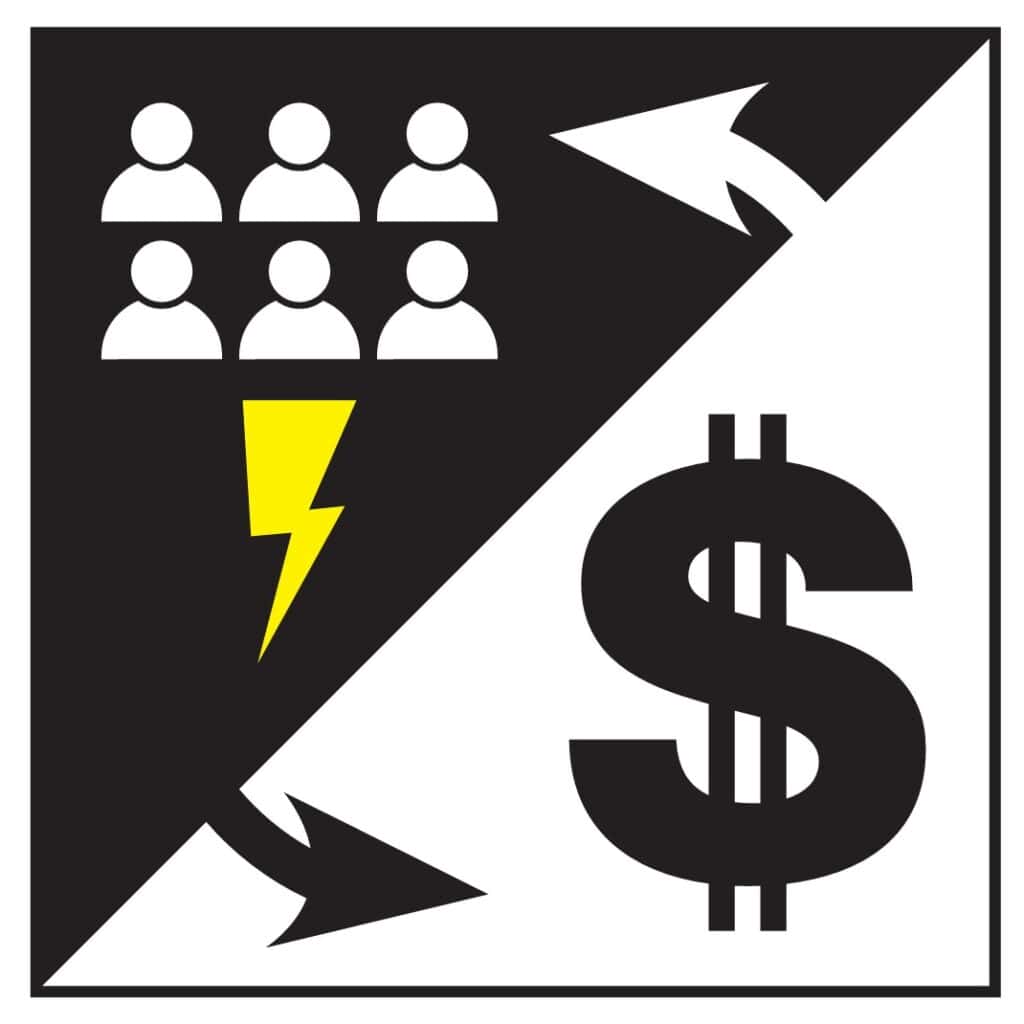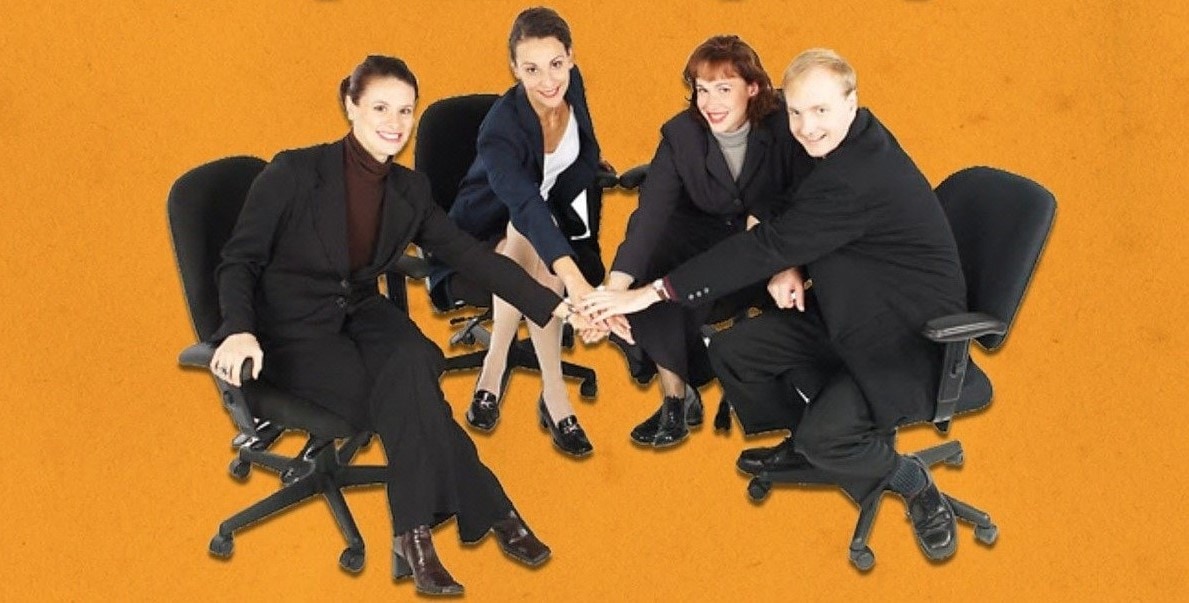Are you one of those people who says things like, “we should make a trade-off between the people and the business?”
I think we’ve all said something like that before, maybe even recently. It seems like a reasonable question to consider doesn’t it? Or does it?
Let’s think about this differently. What if we regard business as a conversion process? More specifically, a process of turning people energy into economic value. It’s a converter. A transformational process. The input is human energy and the output is economic value– as measured by profits, revenues, valuation, market cap, etc.
I am presenting this idea as a model of reality– not literal reality– so we can productively reframe how we think about people and business. Even so, it bears providing some scientific foundation for making the claim in the first place. A good model is rooted in good science. In addition, any good scientific explanation first defines the relevant core terms of the claim. The core terms, in this case, are people energy, economic value, and the process of conversion.
“Energy cannot be created or destroyed, it can only be changed from one form to another.”
Albert Einstein
People energy. Every day people are doing, thinking, and creating. When I think of people energy I am frequently referring to observable human behaviors, work products and future behaviors that might be demonstrated if the conditions are right. Other words we might use to refer to people energy include effort, work, potential, drive, capacity, or passion.
The science of Organizational Behavior Management (OBM) studies how human behavior, what people say and do, is influenced by the environment, and what is termed Motivating Operations (MO). For brevity, a practical definition is “an MO changes how much you ‘want’ something and how hard you will ‘work’ to get it” (Langthorne, McGill, and O’Reilly 2007). Within organizational settings, vision, mission, values, rules, and of course rewards are just a few types of stimuli that if modified, enhanced, or neglected, impacts the MO for behavior to occur or not occur. Understanding this level of behavior analysis is the premise of understanding people energy.
“Value is not intrinsic; it is not in things. It is within us; it is the way in which man reacts to the conditions of his environment.”
Ludwig von Mises, Human Action: A Treatise on Economics
Economic value. Something has economic value when people are willing to offer money in exchange for that something. Presumably, this something is a product or service that solves a problem. The problem may be explicit, as in, I would be willing to spend money to buy an axe if I needed to split firewood. The problem may also, or in part, be implicit, as in buying a shade of lipstick that results in my feeling more secure and comfortable about my appearance.
From the science of human behavior, we are describing the difference between secondary reinforcers (e.g., money) and primary reinforcers (food, pleasure). To understand economic value in the eyes of our team members, we need to know what are the reinforcers of the people performing the work, specifically the secondary reinforcers (gift cards, bonuses, promotions) they will work for so they can get their own primary reinforcers (vacation, five star meal). By identifying the reinforcers we will understand the economic exchange people will work for. By understanding the reinforcers at play in the market we serve, we are better able to generate a highly valued product of service that customers will pay for.

Process of conversion. When we consider the definitions above, the conversion process means harnessing human actions and behaviors in order to create a product or service that solves a problem worth paying for. In addition to harnessing the energy of people, a maximally effective conversion process also accesses as much potential energy as possible. This is done by matching peoples’ interests to the type of work, a methodology the science of OBM refers to as preference assessments (Rodriguez, Sundberg, Biagi, 2016). By identifying preferences, we aim to solve compelling problems and establish a shared vision and mission with co-workers. It is this process of conversion that understanding behavior science pays real dividends.
Let’s use an analogy to demonstrate why the people vs. business trade-off doesn’t work anymore. We regard business as a transformational process of people energy into economic value. Consider an electrical converter, which is a device that converts alternating current (AC) to direct current (DC). Do you ever make a comment about trade-offs between the AC current and the converter? What if we take away the AC current and get more converter as a result? That doesn’t make much sense.
Though it may not always be obvious, energy transfers and transformations constantly happen all around us and are what enable life as we know it to exist.
National Geographic
In “Cash is King” (2011), Rodriguez provides a clear example of this dynamic. In brief, the work of the accounts receivables team of a major telecommunications company was required to make major improvements. Taking an OBM approach, Rodriguez and his colleagues set out to evaluate what needed to be improved upon behaviorally speaking, and what was needed to drive such behavior. One element of the approach taken was gathering employees in focus groups, which one employee commented “was the first time we were asked for our input on any initiative” (page 168). As a result of direct observations, data gathering, and employee focus groups, the organization implemented various solutions including standard scorecards, team meetings, coaching and feedback loops, and monthly rewards. This resulted in an impressive return on investment of over 200% (page 173), not to mention increased client and employee satisfaction. This is a great example of the model in action – people energy – economic value – and a process of conversion.
Every positive action that you take or negative action you avoid is like earning compound interest towards your future self.
Juan Carlos Medina
I propose that there is a lot more to maximizing the conversion of people energy into economic-value than fixating on compensation and fringe costs. I further propose that using language in a way that limits your mental picture of what a business is and does is mistaken. And it’s nonsense. You don’t have a business without people. You don’t maximize long-term economic value creation with this kind of business-vs-people framing.
“The first principle is that you must not fool yourself and you are the easiest person to fool.”
Richard Feynman
The kernel of truth I hope you leave with is a tradeoff to consider– what you might at first see as a decision between people and business is actually a tradeoff between an immediate gain and a long-term benefit. That’s the tradeoff you should be paying closer attention to, the conversion process itself, and how you can profitably get what you need in the short run to keep things going without costing yourself more downstream. It’s not business-vs-people, it’s near-term margins vs. sustainable, long-term value creation.
Returning to the analogy, transactional costs happen in the electrical converter. What changes can you make in your business that will reduce the non-usable “heat” it generates? What changes can you make that enhance the creation of this usable energy in the first place? The business leaders who figure out how to answer those questions are in a much better position than those who don’t.
“Take care of the people, the products, and the profits- in that order.”
Ben Horowitz, The Hard Thing About Hard Things
There is no easy button. There is no secret recipe. There are people…working. Your job as a leader is working hard and listening to what the world says about what works. It’s also listening to the world about what people value enough to pay money for. You can study human behavior in a real way to enable people energy to drive economic value for all.
Next time you hear yourself or others saying “business vs. people”, pause. Pause and reframe. Think about your business as a converter of people energy into economic value. Take a longer view than you’re initially inclined to do. That will be a very good start.
If you’d like to learn more about how to unleash and harness energy in your organization, try out our People Energy Audit. It’s a quick, self-paced assessment that gets you a report on ways you can better unleash and harness the people energy using people practices and strategies.
References:
- Langthorne, P., McGill, P., & O’Reilly, M. E. (2007). Incorporating motivation into the functional analysis of challenging behavior: On the interactive and integrative potential of the motivating operation. Behavior Modification, 31, 466–487.
- Rodriguez, M., Sundberg, D., and Biagi, S. (2016). OBM Applied! A Practical Guide to Implementing Organizational Behavior Management. Volumes 1-4. ABA Technologies, Inc., Melbourne, FL.
- Rodriguez, M. (2011). Cash Is King—How OBM Helped a North American Telecommunications Organization Obtain $76 Million in Receivables. Journal of Organizational Behavior Management, 31:3, 163-178, DOI: 10.1080/01608061.2011.589733

